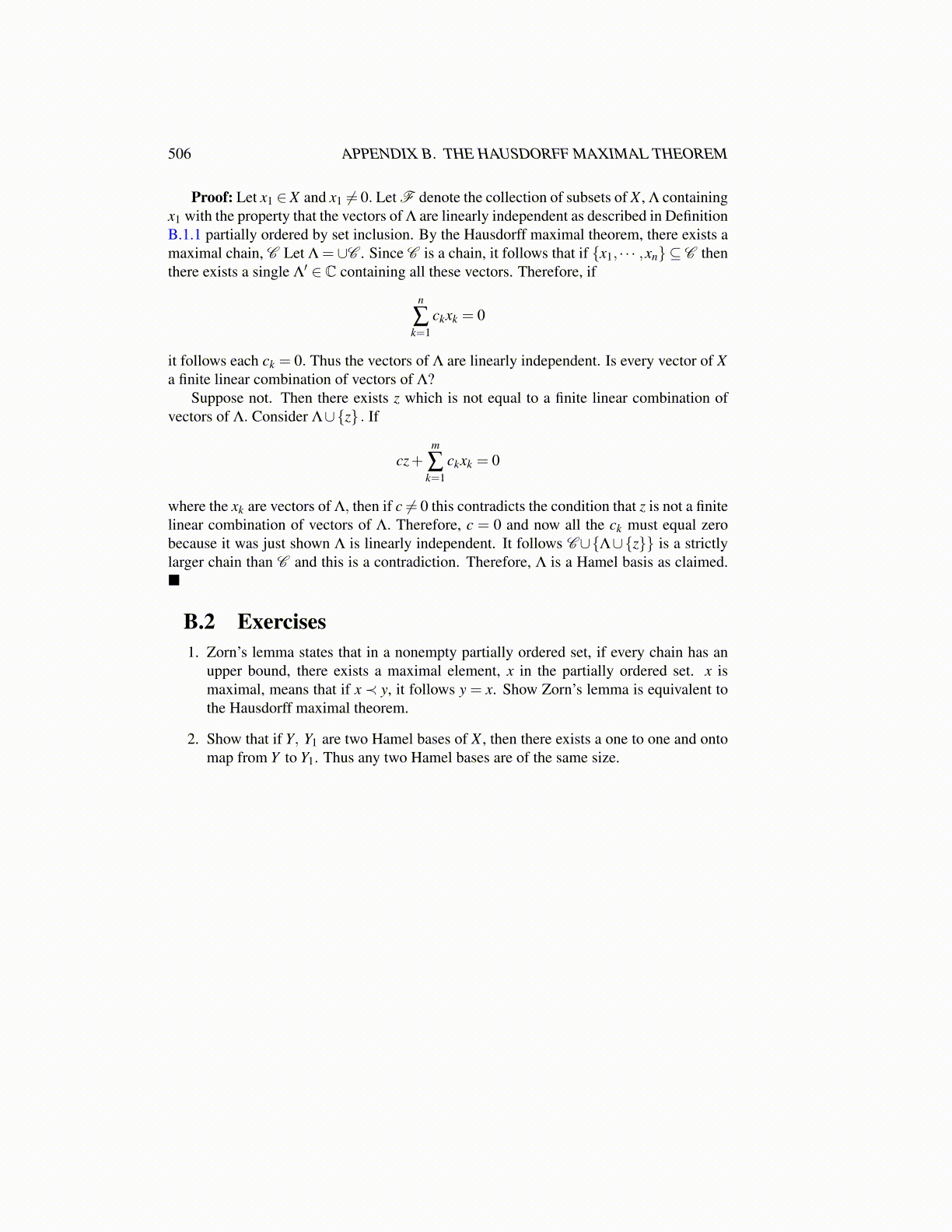
506 APPENDIX B. THE HAUSDORFF MAXIMAL THEOREM
Proof: Let x1 ∈ X and x1 ̸= 0. Let F denote the collection of subsets of X , Λ containingx1 with the property that the vectors of Λ are linearly independent as described in DefinitionB.1.1 partially ordered by set inclusion. By the Hausdorff maximal theorem, there exists amaximal chain, C Let Λ = ∪C . Since C is a chain, it follows that if {x1, · · · ,xn} ⊆ C thenthere exists a single Λ′ ∈ C containing all these vectors. Therefore, if
n
∑k=1
ckxk = 0
it follows each ck = 0. Thus the vectors of Λ are linearly independent. Is every vector of Xa finite linear combination of vectors of Λ?
Suppose not. Then there exists z which is not equal to a finite linear combination ofvectors of Λ. Consider Λ∪{z} . If
cz+m
∑k=1
ckxk = 0
where the xk are vectors of Λ, then if c ̸= 0 this contradicts the condition that z is not a finitelinear combination of vectors of Λ. Therefore, c = 0 and now all the ck must equal zerobecause it was just shown Λ is linearly independent. It follows C∪{Λ∪{z}} is a strictlylarger chain than C and this is a contradiction. Therefore, Λ is a Hamel basis as claimed.■
B.2 Exercises1. Zorn’s lemma states that in a nonempty partially ordered set, if every chain has an
upper bound, there exists a maximal element, x in the partially ordered set. x ismaximal, means that if x ≺ y, it follows y = x. Show Zorn’s lemma is equivalent tothe Hausdorff maximal theorem.
2. Show that if Y, Y1 are two Hamel bases of X , then there exists a one to one and ontomap from Y to Y1. Thus any two Hamel bases are of the same size.